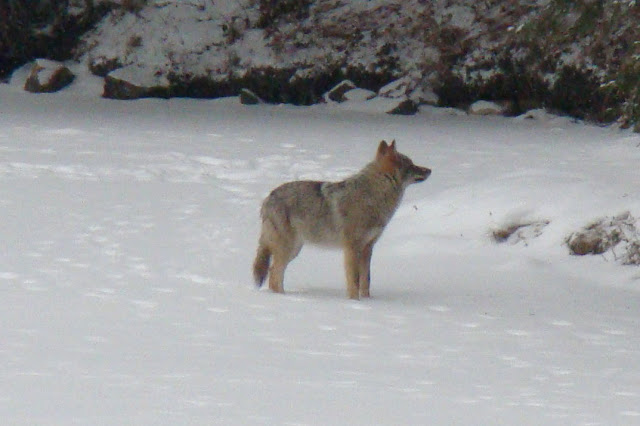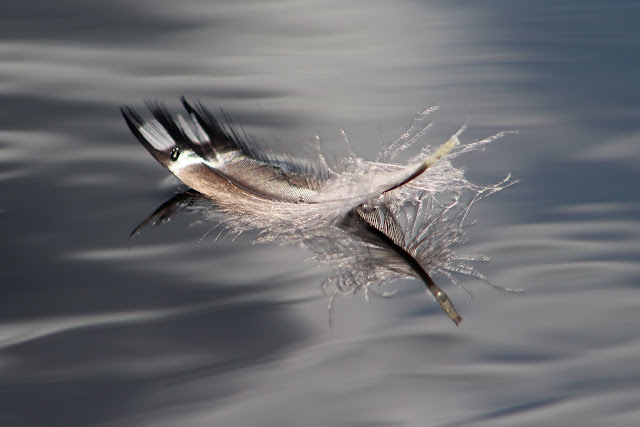The area has a wide variety of habitat including beaver ponds, streams, rocky outcroppings and stone walls; the trails are well marked - but do pick up a trail map, as there are a lot of trails and intersections.
 |
| Community Forest trails are well marked |
 |
| The stream below the waterfall The waterfall is shown on the map though there isn't much water falling at the moment |
 |
| One of several beaver ponds on the property |
 |
| A stone wall leads right up to this granite outcropping |
Many of the streams were open but there are bridges over most of them so crossings are not a problem.
 |
| Warm weather and moving water means open streams - but bridges facilitate crossings |
I'm always surprised at how much wildlife is present here, being so close to the village, but it shows that even a medium-size conserved area of 186 acres will support a wide range of life. I saw signs of many of the mammals present in New Hampshire, including some I rarely see, such as rabbit (or hare).
 |
| Rabbit tracks |
Near the beaver dam animals had taken advantage of the openings to access water, including this mink which slid down the icy bank just below the dam.
 |
| Several animals visited this watering hole below the beaver dam |
It's good to know that I'm not the only one that slips on the ice. Look how this fox slid all over the crusty surface!
 |
| Even four wheel drive and spikes can't prevent skids |
In one wound we can see the tracks the insects made in the outer layer of wood just under the bark.
 |
| Insect tracks revealed by woodpeckers in search of the culprits |
I don't know what beetle does this, but the woodpeckers are doing their part to get rid of them.
I'll close with a couple of pictures back at Lake Wicwas which show the contrasting scenes that can appear on a winter day. First, looking south.
 |
| South towards Ladd Mountain |
And then, looking north.
 |
| Northwest, towards the Dolloff Brook inlet |
To borrow a phrase from John Denver, sunshine on my shoulders makes me happy.






















































